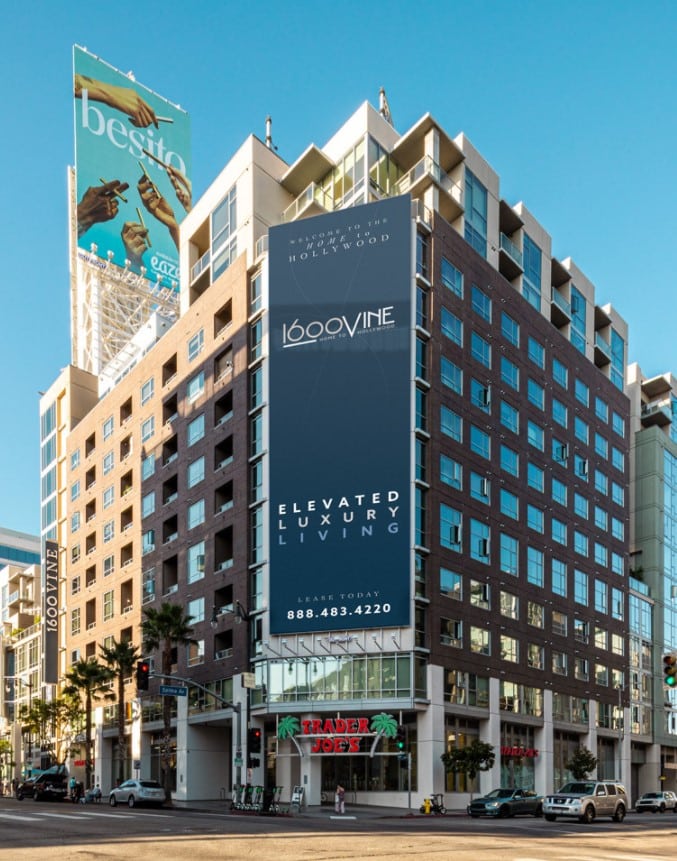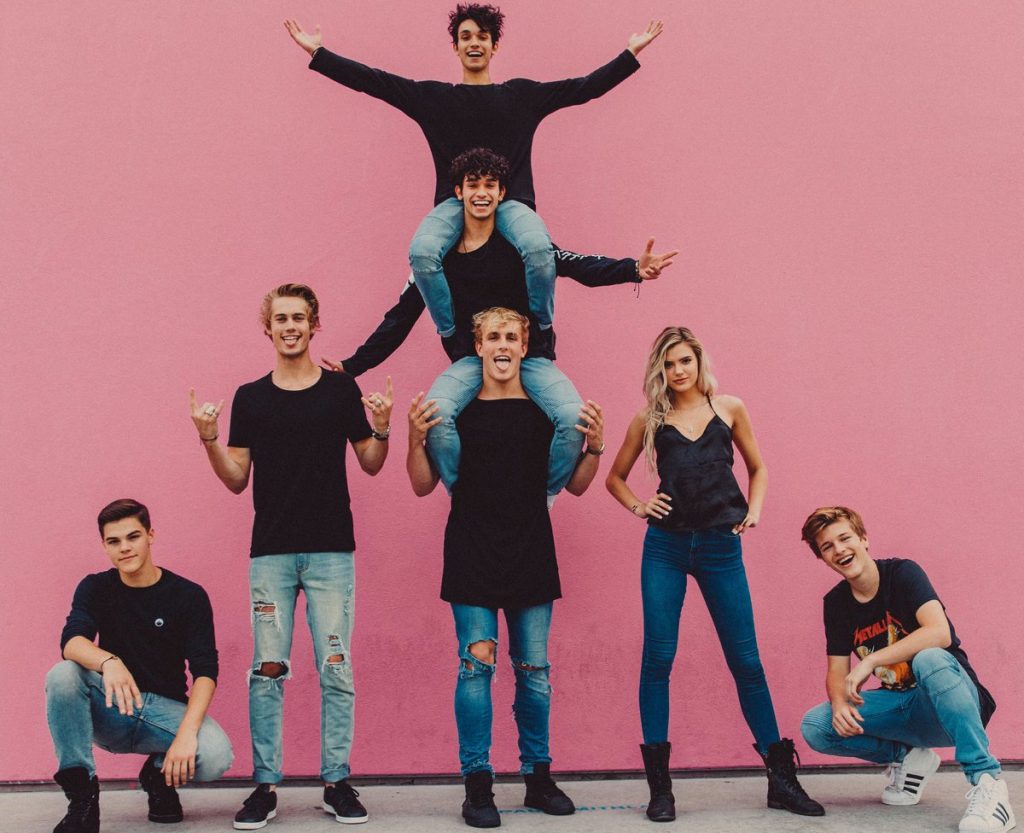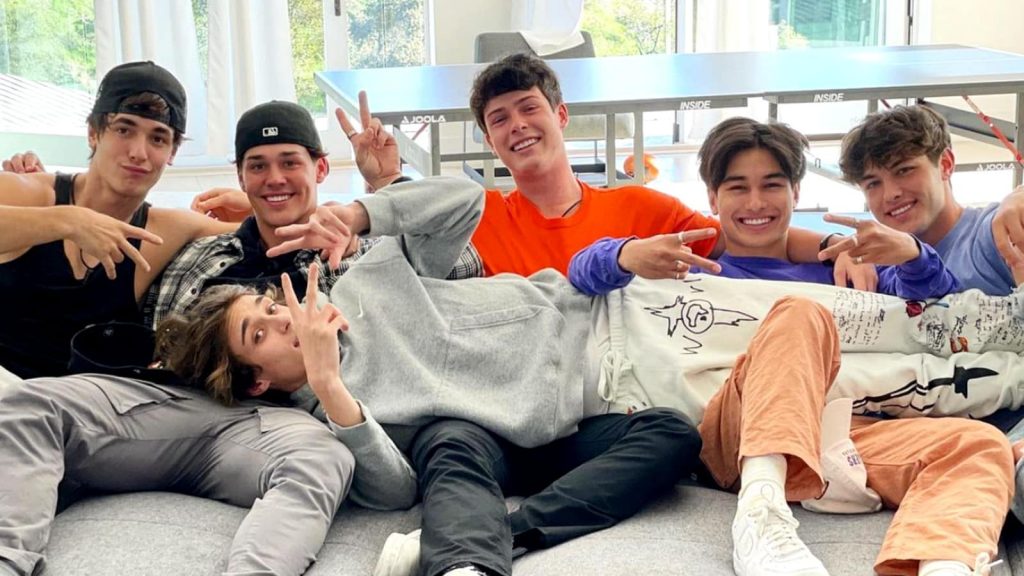TO RENT: Spacious room in 10-bed mansion with pool. Wi-fi, bills & fame included.
In the ever-changing online landscape, the goalposts for those looking to make a career out of content creation seem to be moving all the time.
It’s scarcely a decade since achieving viral fame with a single video saw you considered an internet celebrity, a title that often came with Good Morning America interviews, sponsorships worth thousands and an often fiercely loyal fanbase. With social media in its infancy and YouTube users only just beginning to catch onto the platform’s potential to produce its own stars, anyone picking up over 1,000,000 views on a video was almost guaranteed an opportunity to entirely change their life.
In the years since, the tide has well and truly turned. Social media is increasingly over-saturated and the attention span of the average viewer is shorter than ever – for those looking to make a career as a content creator today, the struggle to stand out and keep people watching can be all-encompassing. It’s no wonder that so many creators have taken to working around the clock.
For many of the internet’s more determined personalities, it was high time to get serious – to create an environment with the dedicated purpose of producing as much content as possible for the entertainment of viewers – and so the content house phenomenon began. These days, there are multiple content houses across LA. If the backdrop of a certain creator’s TikToks looks familiar to you, it’s more than likely because they live under the very same roof as several other online stars.
Whilst certainly not the most famous example of a content house, many consider 1600 VINE to be the first iteration of the phenomenon. A luxury apartment complex in downtown Hollywood, 1600 VINE became home to several top social media stars, particularly those seeking popularity on YouTube and the now-defunct Vine, hence the fairly on-the-nose choice of residence. Look into the identities of previous 1600 VINE residents and you’re greeted with a list of some of the most prominent internet personalities of the mid-to-late 2010s – Amanda Cerny, Lele Pons, King Bach and brothers Logan and Jake Paul have all leased one of the building’s plush apartments for a time.
musicians, actors and models – to make the move to Los Angeles, but the decision for so many Vine stars to reside under the same roof was to do with far more than just the ‘Ha! Get it?’ name of the building itself.

This was a new era for rising internet stars and came with plenty of new opportunities – YouTube, now nearly a decade into operation, was becoming oversaturated and attention was much more difficult to hold onto. The birth of Vine, with its quickfire content and the option for users to ‘Revine’ other users’ videos to their own followers, offered the perfect ‘in’ for those looking for fame.
However, with over 40 million active users at the peak of its popularity, creators had to work hard to stay relevant. The more content you posted and the more you collaborated with other popular users, the more attention you were likely to gain – those living in 1600 VINE found themselves in the unique position where they called some of the platform’s biggest stars their neighbours. Collaborations were easily accessible, with popular ‘Viners’ spending hours a day shooting content with each other – get yourself into this inner circle and you were almost guaranteed to make it big.
When Vine announced that they’d be shutting down in 2016, stars of the platform had to up the ante, migrating to different platforms and attempting to take their audiences with them – some more successful than others. For one previous resident of 1600 VINE, Jake Paul, the way to make it work was clear – to continue their focus on cross-collaboration and producing as much content as possible by housing several internet stars under one roof. This was the birth of the content house phenomenon as we know it today with the rise to prominence of Team 10 – perhaps the most controversial content house to date.

Team 10, a group of young aspiring internet stars all allegedly ‘hand-selected’ by Paul himself, burst into the mainstream, and into controversy, in 2017. Residing in the Team 10 house, a lavish mansion in an affluent area close to LA’s famous Melrose Avenue, Jake Paul and his new teammates lived a lifestyle focused entirely on producing loud, high-energy YouTube content from the same home – and plenty of it. However, unlike the set-up at 1600 VINE, this wasn’t a simple case of helping each other out in order to gain popularity – far from adopting a ‘you scratch my back, I scratch yours’ mentality, it soon became clear that Jake Paul’s approach to Team 10 was far more strategic and surprisingly strict.
Team 10 wasn’t just a group of friends sharing a home, having fun and making a little money in the process – it was a highly lucrative business and Jake Paul was the boss.
Before being allowed to set up home in the Team 10 house, members were asked to sign a formal agreement on what these living arrangements entailed. Residents lived rent-free in the home in exchange for agreeing to focus on regularly producing successful online content and participating in brand deals – with much of the profit going into the pockets of Jake Paul. It’s since been revealed that Jake Paul also allegedly forced creators to sign over 10-20% of their own YouTube ad revenue over to him for a period of five years, even if they decided to leave the group.
While creators living in the home continued to create their own content, they were also obliged to take part in videos for housemates, whether consensual or not. Given that some creators in the house, including Jake Paul himself, made their money producing often reckless and sometimes even dangerous Jackass-style skits and pranks, it’s easy to see how this made the living situation difficult to some residents – especially given that many were minors. Videos on Jake Paul’s YouTube channel alone included footage of housemates being electrically shocked without warning, being woken up by Paul destroying their bedroom doors with a chainsaw and being pressured into jumping from the roof of the house into the garden’s pool.
Housemates may have signed over the rights to some of their profits legally, but even their personal belongings appeared to be fair game. Former Team 10 member AJ Mitchell has previously recalled arriving home to find that some of his belongings had been thrown into the pool and destroyed for one of Paul’s YouTube videos in just one of many similar incidents. Creators weren’t allowed to complain, of course – if they did, they’d be kicked out of the house but forced to remain under the financial restrictions of their contract anyway.
The living conditions themselves were a source of controversy once former members began speaking out. The house had become so over-crowded that members under contract were forced to sleep on the floor or share three-tier bunk beds – in one instance, a 14-year-old boy and Jake Paul’s 20-year-old girlfriend at the time, Alissa Violet, were forced to share a room for months. Whilst Alissa has admitted that she and Jake often shared his bed instead, she says that he would regularly ask her to leave and openly admit that he had plans to bring a girl back to ‘hang out’ in his room.
Then there are the countless allegations of incidents of sexual misconduct taking place within the home. To date, at least two women have come forward to say that they were sexually assaulted by Jake Paul at the Team 10 house.

Whilst Jake Paul has since moved away from his social media career to focus on raising his profile as a boxer and Team 10 has been all but abandoned, the template – or the business model – set by the collective has since rocketed in popularity. These days, however, it’s all about TikTok creators.
The exponential growth of TikTok over the last two years isn’t just reminiscent of Vine’s rise to prominence, rather it has smashed Vine’s glass ceiling in every way. TikTok has an estimated userbase of over 1 billion – paired with a highly intelligent algorithm that targets users with videos based on their individual interests, anybody on TikTok can gain hundreds of thousands of followers overnight if there are enough pairs of eyes on their content.
Whilst this means that the app has generated more rising stars than any other, it’s also changed the goalposts for what it means to become an internet star in the first place. A following of over 100k on any other platform would be considered well into influencer-level – on TikTok, the biggest names on the platform have followings of over one hundred million.
With this in mind, it’s no surprise that the content house formula that previously worked for stars of Vine and YouTube has been replicated several times by TikTok creators in recent months. Even beyond Los Angeles, mansions are being snapped up to become content houses for the use of TikTok creators – according to Kapwing, there are currently around 40 prominent TikTok content houses across the world. Many of them are being paid for not by the creators but by private investors.

In 2021, followers are a currency of their very own. Investors are increasingly willing to hand over millions to house the young stars of the platform in order to support collaborative content, again in exchange for a percentage of the creators’ profits. Whilst it seems optimistically likely that these creator-manager agreements aren’t as predatory or damaging as those at play within Team 10’s heyday, internet fame is often fleeting – what happens to these creators, most of them teenagers, when the views and the money dry up? Will they be forced to leave the workplace that has doubled as their home?
Given the controversies surrounding content houses, it’s no surprise that there have been calls for the agreements signed by creators to come under more scrutiny. It has also done plenty to resurrect the movement calling for child labor laws to be reviewed in line with the rise of minors profiting from social media.
Whether content houses will go on to be a firm fixture within the world of internet fame remains to be seen. One thing we do know, however, is that LA residents might want to keep them in mind when that ‘Sold’ sign goes up on your street – content collectives don’t traditionally make particularly great neighbours.
Read More:The D’Amelios And The New TikTok Empire


